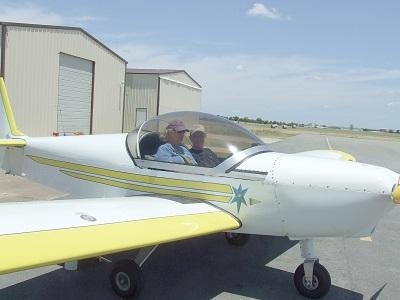Fri, Dec 19, 2014
Many Aircraft That Are Ideal For Light Sport Operation Carry An Experimental Airworthiness Certificate; But What Does That Mean?
The most common experimental airworthiness certificate is the one that is issued to homebuilt aircraft or experimental light sport airplanes. However, this is not the only type of experimental certification, and it’s important to read the fine print on the airworthiness certificate and to review operating limitations for the aircraft before considering ownership.

The FAA issues two types of airworthiness certificates: a standard certificate and a special certificate. The standard certificate is issued to an aircraft that is built in accordance with FAA regulations. Under today’s regulations, these would be FAR 23 or FAR 25. However, there many airplanes out there holding airworthiness certificates from other FAA standards issued in days gone by that are still valid.
An experimental airplane carries a special airworthiness certificate. The special airworthiness certificate is issued for aircraft that have not shown compliance with FAA design, testing, and manufacturing standards. An example of these would be an experimental-amateur built aircraft and a special-light sport airplane. However, not all aircraft with an experimental airworthiness certificate are the same.
Experimental airworthiness certificates actually come in 9 subdivisions referred to as “purpose.” Each one of these purpose subdivisions will carry its own operating limitations, some of which can be extremely limiting resulting in the airplane not being practical for recreational flying. These experimental purpose subdivisions are:
- Research and development
- Showing compliance with regulations
- Crew training
- Exhibition
- Air racing
- Market surveys
- Operating amateur-built
- Operating primary category kit-built aircraft
- Operating light-sport aircraft
An airplane issued a special airworthiness certificate is also issued operating limitations that are created by the FAA and are considered part of the airworthiness certificate itself. The operating limitations of the different experimental purpose categories are quite different from each other. Operating limitations issued with a special airworthiness certificate may carry numerous limitations that are not found in the regulations. These limitations and stipulations not only apply to the airplane, they also may apply to the pilot operating the aircraft.
If you are considering ownership of an airplane with an experimental airworthiness certificate, make sure you understand the purpose classification and carefully read the operating limitations.
(Image of experimental Zodiac 601 XL-B from file)
More News
Aero Linx: International Federation of Airworthiness (IFA) We aim to be the most internationally respected independent authority on the subject of Airworthiness. IFA uniquely combi>[...]
Ultrahigh Frequency (UHF) The frequency band between 300 and 3,000 MHz. The bank of radio frequencies used for military air/ground voice communications. In some instances this may >[...]
A Few Questions AND Answers To Help You Get MORE Out of ANN! 1) I forgot my password. How do I find it? 1) Easy... click here and give us your e-mail address--we'll send it to you >[...]
From 2019 (YouTube Edition): Learning To Paint Without Getting Any On Your Hands PPG's Aerospace Coatings Academy is a tool designed to teach everything one needs to know about all>[...]
Also: Sustainable Aircraft Test Put Aside, More Falcon 9 Ops, Wyoming ANG Rescue, Oreo Cookie Into Orbit Joby Aviation has reason to celebrate, recently completing its first full t>[...]
 ANN's Daily Aero-Linx (05.06.25)
ANN's Daily Aero-Linx (05.06.25) ANN's Daily Aero-Term (05.06.25): Ultrahigh Frequency (UHF)
ANN's Daily Aero-Term (05.06.25): Ultrahigh Frequency (UHF) ANN FAQ: Q&A 101
ANN FAQ: Q&A 101 Classic Aero-TV: Virtual Reality Painting--PPG Leverages Technology for Training
Classic Aero-TV: Virtual Reality Painting--PPG Leverages Technology for Training Airborne 05.02.25: Joby Crewed Milestone, Diamond Club, Canadian Pilot Insurance
Airborne 05.02.25: Joby Crewed Milestone, Diamond Club, Canadian Pilot Insurance



